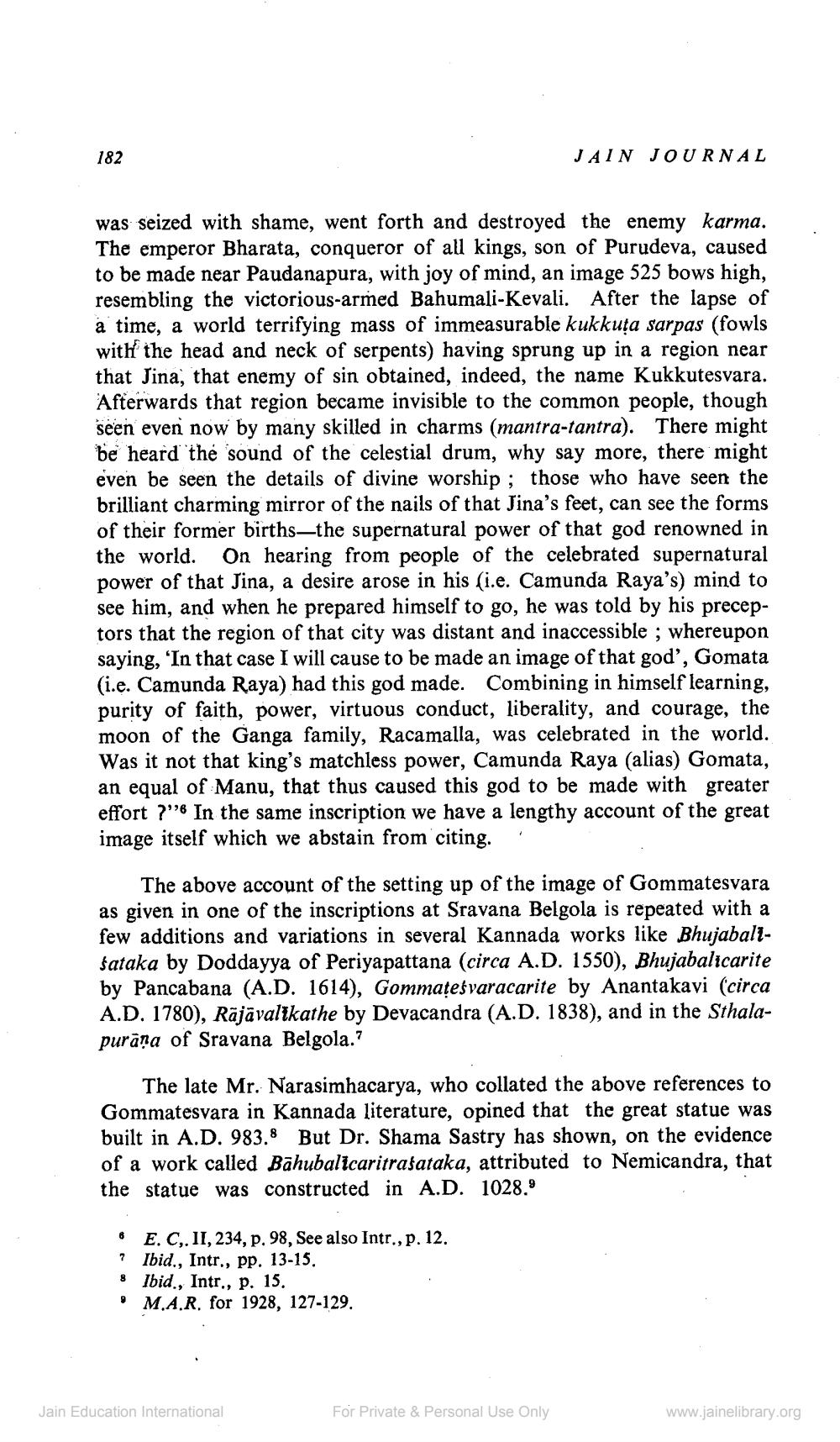________________
182
was seized with shame, went forth and destroyed the enemy karma. The emperor Bharata, conqueror of all kings, son of Purudeva, caused to be made near Paudanapura, with joy of mind, an image 525 bows high, resembling the victorious-armed Bahumali-Kevali. After the lapse of a time, a world terrifying mass of immeasurable kukkuta sarpas (fowls with the head and neck of serpents) having sprung up in a region near that Jina, that enemy of sin obtained, indeed, the name Kukkutesvara. Afterwards that region became invisible to the common people, though seen even now by many skilled in charms (mantra-tantra). There might be heard the sound of the celestial drum, why say more, there might even be seen the details of divine worship; those who have seen the brilliant charming mirror of the nails of that Jina's feet, can see the forms of their former births-the supernatural power of that god renowned in the world. On hearing from people of the celebrated supernatural power of that Jina, a desire arose in his (i.e. Camunda Raya's) mind to see him, and when he prepared himself to go, he was told by his preceptors that the region of that city was distant and inaccessible; whereupon saying, 'In that case I will cause to be made an image of that god', Gomata (i.e. Camunda Raya) had this god made. Combining in himself learning, purity of faith, power, virtuous conduct, liberality, and courage, the moon of the Ganga family, Racamalla, was celebrated in the world. Was it not that king's matchless power, Camunda Raya (alias) Gomata, an equal of Manu, that thus caused this god to be made with greater effort ?" In the same inscription we have a lengthy account of the great image itself which we abstain from citing.
The above account of the setting up of the image of Gommatesvara as given in one of the inscriptions at Sravana Belgola is repeated with a few additions and variations in several Kannada works like Bhujabalisataka by Doddayya of Periyapattana (circa A.D. 1550), Bhujabalicarite by Pancabana (A.D. 1614), Gommatesvaracarite by Anantakavi (circa A.D. 1780), Rājāvalikathe by Devacandra (A.D. 1838), and in the Sthalapurana of Sravana Belgola."
The late Mr. Narasimhacarya, who collated the above references to Gommatesvara in Kannada literature, opined that the great statue was built in A.D. 983.8 But Dr. Shama Sastry has shown, on the evidence of a work called Bahubalicaritrasataka, attributed to Nemicandra, that the statue was constructed in A.D. 1028.9
6 E. C,. II, 234, p. 98, See also Intr., p. 12.
7 Ibid., Intr., pp. 13-15.
8 Ibid., Intr., p. 15.
JAIN JOURNAL
M.A.R. for 1928, 127-129.
Jain Education International
For Private & Personal Use Only
www.jainelibrary.org




